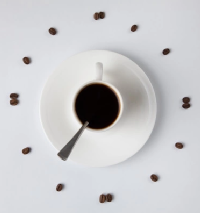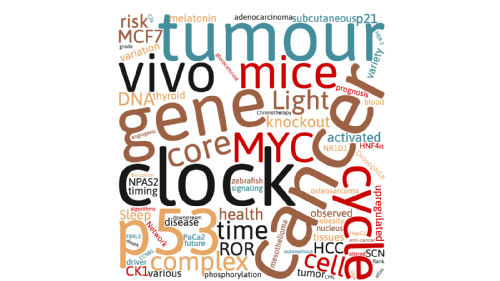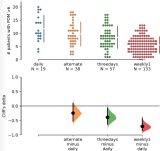Recent Developments in the Patho-Physiological Molecular Clocks Lab
Cell-type specific circadian bioluminescence rhythms in Dbp reporter mice
Collaborative project foremost with David Weaver, UMassMed, who had the will to stick out making this mouse based on one of these "wouldn't it be nice" discussions. With important contributions from Mary Harrington's, Alec Davidson's groups and Tanya Leise.
Finally out, the tissue specific DBP-luc reporter model in JBR with heroic contribution of Lauren Garbutt who characterised the fluorescence reporter part of this mouse. We will add to the characterisation of the mice and the reporter construct in the not too far future and have found an these reporter model to be ideal to further address tissue and cell type specific circadian rhythms.

Circadian rhythms are endogenously generated physiological and molecular rhythms with a cycle length of about 24 h. Bioluminescent reporters have been exceptionally useful for studying circadian rhythms in numerous species. Here, we report development of a reporter mouse generated by modification of a widely expressed and highly rhythmic gene encoding D-site albumin promoter binding protein (Dbp). In this line of mice, firefly luciferase is expressed from the Dbp locus in a Cre recombinase-dependent manner, allowing assessment of bioluminescence rhythms in specific cellular populations. A mouse line in which luciferase expression was Cre-independent was also generated. The Dbp reporter alleles do not alter Dbp gene expression rhythms in liver or circadian locomotor activity rhythms. In vivo and ex vivo studies show the utility of the reporter alleles for monitoring rhythmicity. Our studies reveal cell-type-specific characteristics of rhythms among neuronal populations within the suprachiasmatic nuclei ex vivo. In vivo studies show Dbp-driven bioluminescence rhythms in the liver of Albumin-Cre;DbpKI/+ “liver reporter” mice. After a shift of the lighting schedule, locomotor activity achieved the proper phase relationship with the new lighting cycle more rapidly than hepatic bioluminescence did. As previously shown, restricting food access to the daytime altered the phase of hepatic rhythmicity. Our model allowed assessment of the rate of recovery from misalignment once animals were provided with food ad libitum. These studies confirm the previously demonstrated circadian misalignment following environmental perturbations and reveal the utility of this model for minimally invasive, longitudinal monitoring of rhythmicity from specific mouse tissues.
Frequency of the PROMs
|
|
In a collaboration led by Pasquale Innominato, we evaluate the impact of different frequencies for the evaluation of patient-reported outcomes (PRO) in cancer. PRO have proven relevant positive clinical impact on patients’ communication with healthcare professionals, decision-making for management, wellbeing and overall survival. However, the optimal frequency of PRO assessment has yet to be defined. Based on the assumption that more frequent sampling would enhance accuracy, we aimed at identifying the optimal sampling frequency that does not miss clinically relevant insight. Our analysis suggests that in patients receiving chemotherapy for advanced cancer, increasing the density of PRO collection enhances the accuracy of PRO assessment to a clinically meaningful extent. This is valid for both computation of averages symptom burden and for the recognition of episodes of severe symptom intensity. |
Coffee anyone?
 |
Most organisms with a nervous system have been shown to sleep. Why is not yet clear, but it is clear that the longer an organism stays awake the higher the need for sleep, ie. sleep pressure. However, the biological clock, also present in virtually all organisms, is modulating sleep need, eg. in people after a night without sleep, sleep pressure is (temporarily) reduced around sunrise courtesy of their circadian drive to become active at that time. Thus, sleep pressure and circadian rhythms influence each other.
Interestingly, caffeine, which is found in coffee and energy drinks promising wings, and one of the world’s most widely consumed psychoactive substances, is reducing sleep pressure by a known mechanism, but also impacting on the circadian clock. So far, the regulatory mechanisms for the interaction are at least partly unclear.
In this publication, we showed how adenosine A1/A2A receptor antagonists, such as caffeine, shift circadian rhythms and enhance the effects of light on the clock, providing a molecular link between sleep pressure and circadian rhythms. These insights have implications for therapeutic strategies for rhythm disorders. |
Endocrine Related Cancers review on what stop tumours ticking, how to determine it, and why it might be important
In a great joint effort by ARAP student Ewan Stephenson and MRC DTP student Laura Usselmann with Ewan's Singaporean co-supervisors David Virshup (DUKE-NUS) and Vinay Tergongar (A*STAR), we are providing an in depth look into clocks in tumours.

Did we wake up in time for better stroke treatment translation?
In a commentary led Warwick colleague Johannes Boltze and Nadine Diwischus and Munich researchers Martha Merrow and Nikolaus Plesnia in the Journal of Cerebral Blood Flow and Metabolism, we argue that recent discoveries on the considerable circadian modulation of treatment in stroke might explain some of translational failures in therapeutic development in this area.

